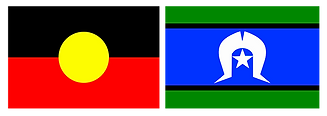
Country
Caring for Country
"Caring for Country represents many things to us. It can mean Ngadjon-Jii rangers doing revegetation work on sick Country. They plant native trees and remove non-native weeds and rubbish from the land, including the waterways. In different, ways we take care of and protect special places." Ernie Raymont and Yvonne Canendo (p. 22).
Albert, T.(2009). The travelling Yamani: A story from Ngadjon-Jii People. Port Melbourne: Pearson.
"Our ancestors took great care of the country. They knew when to burn off, around reedy grass and swamplands where the undergrowth was always damp and there was no danger to them, and that was how they hunted for food. They travelled inland and when winter came, or cold weather, they always made down to the coast lands." (p.110).
Morgan. E. (1994). The calling spirits. Canberra: Aboriginal Studies Press.
Outcome
Creative Arts: Stage 2 Media Arts
Outcome: identify intended purposes and meanings of media artworks, using media arts key concepts, starting with media artworks in Australia including media artworks of Aboriginal and Torres Strait Islander Peoples (ACAMAR061)

Non-verbal learning - observation is a form of non-verbal learning.
Activity 1
Students use Artful Thinking Strategy 'I see, I think, I wonder' to explore the artwork below.

Outcome
Geography: Stage 2 The Earth’s Environment
Outcome: examines differing perceptions about the management of places and environments GE2-3
-
Description of how custodial responsibility for Country/Place influences Aboriginal and Torres Strait Islander Peoples’ views of the environment

Deconstruct / Reconstruct - students begin by watching a video. They then discuss its parts and explore its meaning before creating something new using the knowledge they have learned.
Activity 2
Ask the students if they have ever seen old fishing nets on the beach and why the nets might be a problem. If the students visited the Australian Museum ask them what they remember about the ghost net art.
Allocate each student a number one to six and a letter (A, B, C and D for 24 children). The students watch one of the videos below (depending on their number). All the students who watched the first video then get together and discuss what they learned. Groups are then formed (using the letters A, B, C and D) that include students who have watched different videos (jigsaw activity). Each student in the new group explains to the rest of the group what they saw. To differentiate this activity, use colour coded letter/number cards, so you can allocate the simpler videos to the less able students.
As a class, ask someone who watched each video to explain what the video was about.
Ask the students if they have any questions about ghost nets and write the questions on the board. If the students are struggling to come up with questions, draw a mind map to show what they already know (this usually generates questions). Ask the students to pick one question each and research it using the website http://www.ghostnets.com.au/ranger-activities/cleanups/
Bring the students back together and see if they have managed to answer their question from the website.
Students can then write an information report about ghost nets or design something that could be made from ghost nets.
Students might like to consider what further investigations they could make, or action they could take, to reduce the incidence of ghost nets.
Ghost nets videos
End